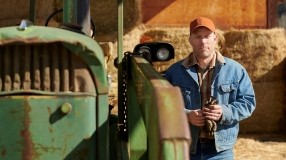The History of the Tooth Fairy
Tales of the Tooth Fairy from around the world!

Origins of the Tooth Fairy
Children can start losing baby teeth as early as age five. While a loose tooth may cause some fear in children, it is also a very exciting milestone. One of the joys in life is seeing a child wake up to find money or a treat left behind by the Tooth Fairy. Like Santa Claus and the Easter Bunny, your child may someday ask about the tooth fairy. Where does the tooth fairy live? What does the tooth fairy look like? The answer you provide may depend on your personal or regional culture, or you may come up with creative answers for your child. To help with your responses, it may be helpful to know how the legend of the Tooth Fairy began.
Traditions of the Tooth Fairy date back thousands of years. There are several different versions of the Tooth Fairy's origin from around the world:
- One of the earliest recordings of a "tooth fairy" occurred in Europe as the Norse and Northern European traditions called the "tand-fe" or tooth fee. When children lost their teeth,parents gave them a small amount of money. It was believed that children's teeth brought good luck in battle, and some cultures created necklaces out of them.
- In Russia, Spain, Greece, France, and China, it is not a fairy but a mouse who enters a child's room and removes the lost baby tooth from under a pillow or the nightstand. The tooth is then replaced with money or a gift.
- In Brazil, a bird collects only clean baby teeth that children lose.
- The earliest recording of the Tooth Fairy in the United States dates back in 1908, when the Chicago Daily Tribune proposed that kids should place their lost tooth under their pillow and parents should replace it with a nickel.
Thanks to popular culture, the Tooth Fairy has become a household name, making losing a tooth a more pleasant experience for children. After collecting a lost tooth from under a child's pillow, parents typically make the decision of how much money to replace it with based on current economics, the child's behavior, and condition of the tooth.
From Garden to Pillow
The contemporary version of the Tooth Fairy involves children placing their lost tooth under a pillow. Did you know that this tradition came from early Europeans? Children buried their lost tooth in the garden so that the new tooth would grow to replace the missing tooth.
Your child should have all twenty teeth in their mouth by age three. They will generally lose their first teeth at around 6-7 years of age.
Note: The information in this document is not meant to replace the advice of your dentist or another licensed healthcare professional. Talk to your dentist for any specific dental advice.






